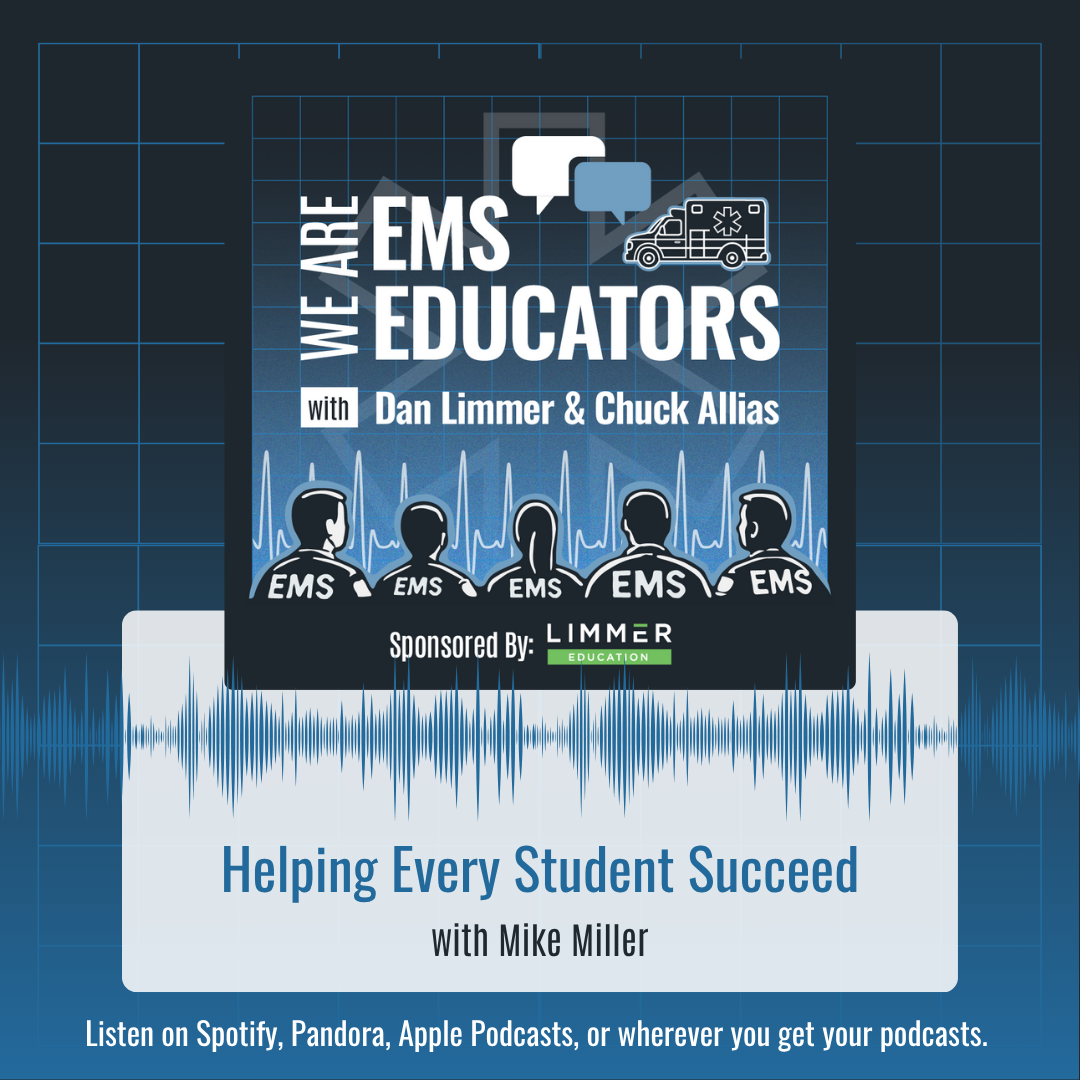
Limmer Education

by Mike Miller
Our articles are read by an automated voice. We offer the option to listen to our articles as soon as they are published to enhance accessibility. Issues? Please let us know using the contact form.
The traditional notion that rigorous emergency medical services (EMS) education must inherently be a process of elimination – filtering out students who struggle – is being challenged by forward-thinking educators who ask, "Why not try to have everyone pass?"
Given EMS workforce challenges, this philosophy is particularly vital in EMS education, where the ability to retain and support students can lead to profound improvements in student engagement, program success, and overall workforce quality (Margolis et al., 2009) as well as directly impact patient care and community health.

One of the most significant ways educators can help every student pass is by establishing a culture of support and encouragement. Many students enter paramedic programs with diverse backgrounds, varying levels of academic preparation, and unique learning styles. Instead of viewing these differences as obstacles, effective educators leverage them as opportunities to enhance learning. By fostering an environment where students feel safe to ask questions, make mistakes, and grow, educators can transform the classroom into a space where learning thrives rather than where failure is feared.
Providing structured mentorship and peer support is another powerful strategy. When experienced students or graduates assist newer students, it creates a learning culture where students feel supported in their learning journey and many later become mentors to others, reinforcing a cycle of success and collaboration. This peer-to-peer guidance not only improves student retention but also strengthens the professional network within EMS (Ball et al., 2022).
Traditional lecture-based instruction is not always effective for every learner. To ensure all students have the opportunity to succeed, EMS educators should incorporate a variety of teaching methods tailored to different learning styles. Hands-on simulations, case-based discussions, and real-world scenarios allow students to apply their knowledge in a meaningful way. By engaging students through active learning, educators increase comprehension and retention, ultimately improving exam performance and clinical competence (McKenna et al., 2015).
Additionally, adaptive learning technology can play a crucial role in helping struggling students. Online modules, self-paced quizzes, and interactive assessments can identify knowledge gaps and provide personalized remediation. Students who may struggle with traditional assessments can benefit from these alternative learning tools, ensuring that they receive the necessary reinforcement before critical examinations.
The journey to becoming a paramedic is challenging, and students often face significant academic and personal stress. Educators who recognize and address these challenges can make a substantial difference in student outcomes. Academic support services such as tutoring, study groups, and structured remediation sessions help students who are struggling with coursework. Equally important is emotional support—students should feel that their instructors care about their success not only academically but also as individuals preparing for a demanding profession.
Encouraging a growth mindset is essential. When students believe their abilities can be developed through effort and learning, they are more likely to persist despite challenges. Educators can reinforce this mindset by celebrating progress, providing constructive feedback, and reframing setbacks as learning opportunities.
The impact of this approach is evident in the success stories of programs that prioritize student support—where once-intimidated students gain confidence, perform better, and eventually become mentors to future cohorts (Limmer Education, 2025). Innovation, flexibility, and continuous quality improvement are also fundamental aspects of accreditation.
The CoAEMSP staff and site visitors work every day to share best practices and help programs find innovative and effective ways to meet the standards while maintaining what is unique to their program. For example, some programs have reduced student attrition by utilizing preadmission interviews and knowledge exams as well as open enrollment policies and satellite locations.
The role of an EMS educator extends beyond delivering content; it involves shaping the next generation of paramedics by creating an inclusive, supportive, and effective learning environment. By focusing on mentorship, diverse teaching strategies, and comprehensive support systems, educators can significantly improve student success rates. The feedback from paramedic programs demonstrates that when educators shift their mindset to "helping everyone pass," it leads to stronger, more capable graduates who, in turn, elevate the profession.
In the end, success in EMS education is not about how many students are removed from the program but how many are empowered to save lives.
Margolis, G.S., Romero, G.A. Fernandez, A.R., & Studnek, J.R. (2009). Strategies of high-performing paramedic educational programs. Prehospital Emergency Care, 13(4), 505-511.
McKenna, K.D., Carhart, E., Bercher, D., Spain, A., Todaro, J., & Freel, J. (2015). Simulation use in paramedic education research (SUPER): A descriptive study. Prehospital Emergency Care, 19(3), 432-440.
Ball, M.T., Powell, J.R., Collard, L., York, D.K., & Panchal, A.R. (2022). Administrative and educational characteristics of paramedic programs in the United States. Prehospital and Disaster Medicine, 37(2), 152-156.
Limmer Education. (2025). Creating a positive classroom culture in EMS education. Access: https://www.limmereducation.com/creating-a-positive-classroom-culture-in-ems-education/.

Limmer Education

Dan Limmer, BS, NRP

Dan Limmer, BS, NRP